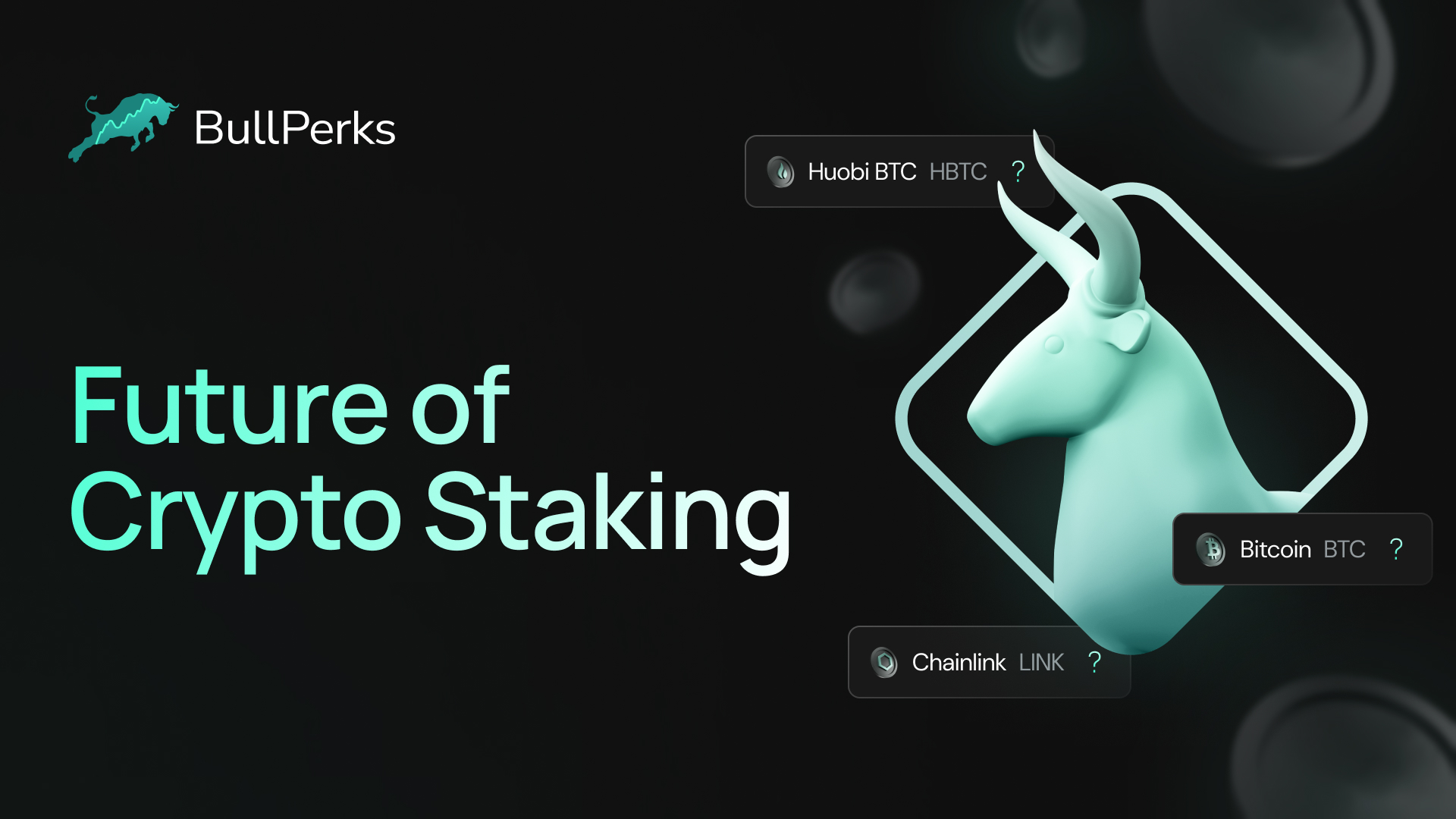
As we delve into the world of blockchain interoperability, it's noteworthy to mention the recent strides made by BullPerks. We have introduced the Cross-Chain Swap Bridge feature on BullStarter to expand our platform's capabilities.
This addition underlines the growing importance and potential of cross-chain bridges in the dynamic landscape of cryptocurrency. So, whether you're a seasoned crypto enthusiast or just starting your blockchain journey, this guide promises to provide valuable insights into the best cross-chain bridges available today.
What Is a Cross-Chain Bridge?
A cross-chain bridge is a technological solution that allows for interoperability between multiple blockchain networks. It enables the transfer of digital assets, including cryptocurrencies and NFTs (Non-Fungible Tokens), and information from one blockchain to another.
The primary purpose of a cross-chain bridge is to overcome the isolation issue between different blockchains, which usually operate independently and cannot directly communicate with each other.
By connecting these separate blockchains, a cross-chain bridge allows users to seamlessly move their digital assets from one network to another.
The process generally involves locking or burning the original asset on the initial blockchain through a smart contract and then unlocking or minting a corresponding asset on the target blockchain. This way, the total supply of the asset remains constant across all networks.
Cross-chain bridges play a crucial role in the decentralized finance (DeFi) sector, as they enable greater liquidity and facilitate more efficient transactions by connecting various DeFi protocols operating on different blockchains.
How Crypto Bridges Promote Cross-Chain Interoperability
Crypto bridges, or cross-chain bridges, are pivotal in promoting cross-chain interoperability. They act as a means of communication between different blockchains, allowing assets and data to be transferred smoothly from one to another. For instance, BullPerks has recently introduced the Cross-Chain Swap Bridge feature on BullStarter, expanding the platform's capabilities.
How does cross chain bridge work?
Token Transfer: Crypto bridges allow for the transfer of tokens between different blockchains. This is particularly important as it enables users to leverage the benefits of various blockchains without being confined to one.
Data Sharing: Apart from asset transfers, crypto bridges also facilitate data sharing across blockchains. This is crucial for decentralized applications (dApps) that need to access or verify data on multiple chains.
Decentralization and Security: Most crypto bridges operate on a decentralized network, meaning no central point of failure exists. This enhances the security of transactions as they are validated by multiple nodes in the network.
Interoperable Blockchains: By facilitating the exchange of information and assets, crypto bridges make blockchains interoperable. This means that blockchains, which were once isolated systems, can now effectively communicate and interact, creating a more integrated and versatile blockchain ecosystem.
In essence, crypto bridges are the key to unlocking the full potential of blockchain technology by fostering an interconnected, interoperable, and decentralized blockchain space.
The Best Cross-Chain Bridges
So, what is the best crypto bridge out there? Let's explore some of the most popular cross-chain bridges in the cryptocurrency world. Although numerous directional bridges and cross-chain swaps are available, it's crucial to do your own thorough research and understand what factors to consider.
| Bridge | Description | Key Features |
|---|---|---|
| Synapse Bridge | A reliable cross-chain bridge with a user-friendly interface. | Supports ERC-20 tokens, compatible with EVM-based networks, supports stablecoins like USDT and USDC. |
| Portal (Wormhole) | A paragon of cross-chain interoperability. | Allows asset bridging between non-EVM Layer-1 blockchains, supports NFT bridging. |
| Multichain (formerly Anyswap) | Provides access to a broad array of networks. | Supports 92 different blockchains, NFT wrapping and bridging, cross-chain swaps, staking services. |
| Polygon Bridge | Specifically tailored for products and services within the Polygon ecosystem. | Supports ETH, MATIC, stablecoins, bi-directional bridge to Polygon zkEVM chain. |
| Avalanche Bridge | A multi-functional bridge developed by AvaLabs and Core. | Supports asset movement between Avalanche C-Chain and other networks, comprises three distinct blockchains: X-Chain, P-Chain, and C-Chain. |
Synapse Bridge
Synapse Bridge has distinguished itself as a reliable cross-chain bridge in the entire crypto space, boasting a user-friendly interface reminiscent of a basic decentralized exchange (DEX). It has gained the trust of over a million users, making it an appealing option for those venturing into cross-chain bridges for the first time.
The platform caters to a broad array of ERC-20 token standards and is compatible with various EVM-based blockchain networks. A notable feature of Synapse is its support for several widely-used stablecoins, including USDT and USDC.
Portal (Wormhole)
The Portal Bridge stands as a paragon of cross-chain interoperability. Unlike many bridges that only allow transfers between EVM-compatible networks, Portal pushes the boundaries.
Portal allows digital asset bridging between alternative Layer-1 blockchains that do not utilize an EVM. This includes popular Proof-of-Stake (PoS) chains such as Aptos and NEAR. This distinctive feature provides advanced users with more flexibility compared to other cross-chain bridges, unlocking vast possibilities. Notably, Portal also offers support for NFT bridging.
Multichain (formerly Anyswap)
Formerly recognized as Anyswap, Multichain genuinely embodies its former moniker. This cross-chain bridge provides unparalleled access to a broad array of networks, more than any other application in the cryptocurrency domain.
Multichain's expansive reach encompasses 92 different blockchains, including well-known chains and a variety of lesser-known networks.
In addition to facilitating NFT wrapping and bridging, Multichain also offers cross-chain swaps and staking services. However, if there's one area where Multichain falls short, it would be its user experience, which is relatively less intuitive and slower compared to its counterparts.
Polygon Bridge
Although the Polygon Bridge might not boast as many integrations as other entrants on this distinguished list, it certainly offers a unique value proposition. Developed by Polygon Labs, the Polygon Bridge is specifically tailored for products and services within its native ecosystem.
The platform allows users to bridge cryptocurrencies such as ETH, MATIC, and widely-used stablecoins between the Ethereum mainnet and the Polygon sidechain. Notably, it is the inaugural official application offering a bi-directional bridge to the Polygon zkEVM chain.
Adhering to all creations by Polygon Labs, the Polygon Bridge is designed with an emphasis on simplicity and mass adoption. It features a user-friendly interface that appeals to beginners.
Avalanche Bridge
The Avalanche Bridge can be called the next-generation Avalanche Bridge. It s a creation of AvaLabs and Core, and it serves multiple functions. It enables the movement of assets between the Avalanche C-Chain and other networks, such as Bitcoin and Ethereum, and functions within the Avalanche ecosystem itself.
A common misunderstanding about the Avalanche Bridge is that it's a single network. In reality, Avalanche comprises three distinct blockchains: X-Chain, P-Chain, and C-Chain. While the majority of DeFi and NFT enthusiasts predominantly focus on the C-Chain, the other two chains are frequently utilized by blockchain developers for various development tasks.
Why Are Cross-Chain Bridges Important?
Cross-chain bridges play a vital role in the blockchain ecosystem for a variety of reasons:
Interoperability: They solve the problem of interoperability within the blockchain ecosystem. This allows different blockchains to communicate with each other, enabling users to transfer assets and information seamlessly between different networks.
Increased Liquidity: By allowing the transfer of assets between different blockchains, cross-chain bridges increase token utility by facilitating cross-chain liquidity. This enhances the efficiency of decentralized finance (DeFi) applications by enabling them to access liquidity pools on multiple blockchains.
Greater Accessibility: Cross-chain bridges provide users with access to alternative blockchain networks without exposure to price volatility in that network's native token. This enables users to participate in various DeFi protocols, irrespective of the blockchain network they operate on.
Decentralization: Cross-chain bridges help maintain decentralization by eliminating the need for intermediaries in asset transfers between different blockchains.
Innovation: They also foster innovation by encouraging the development of new applications and services that leverage the unique capabilities of different blockchains.
What Happened to Binance Bridge?
Up until a short while ago, the Binance Bridge (Binance Smart Chain) was considered one of the biggest and most favored cross-chain bridges in the industry. It now seems that the Binance Bridge is either presently inaccessible or has been discontinued.
The latest communication from Binance about their bridge suggests that an upgraded V2 bridge was launched in March 2020. Nevertheless, users who visit the application are prompted to either move tokens within the Binance exchange or opt for a different platform.
Are Crypto Bridges Safe?
While cross-chain bridges in the cryptocurrency world offer incredible benefits and possibilities, they are not without their risks. Given their complex architecture, blockchain bridges can often become targets for hacking and other forms of exploitation. It's crucial to remember that these bridges are essentially smart contracts that hold significant amounts of tokens, making them attractive for potential hackers.
In the past, there have been instances of substantial theft through crypto bridge hacks. For instance, in 2022, over $1.4 billion was reportedly stolen this way. Therefore, while these bridges can provide numerous advantages, users must always be aware of the potential security risks involved and take necessary precautions.
It's recommended to use well-vetted and secure crypto bridges, remain vigilant about the latest security practices, and keep abreast of any external audits or quality checks on the blockchain bridges they plan to use. This can help mitigate some of the risks associated with using these bridges.
Conclusion
In conclusion, cross-chain bridges have revolutionized the way we move cryptocurrency across different blockchains. They offer a seamless, efficient, and often cost-effective solution to interoperability challenges in the diverse blockchain ecosystem.
From the mentioned top cross-chain bridges like Polygon Bridge's simplicity and focus on mass adoption, the multifunctional Avalanche Bridge, and new outstanding features like Cross-Chain Swap Bridge feature on BullStarter, each bridge brings unique features to the table.
However, it's essential to remember that while these bridges offer remarkable benefits, they also carry potential risks. As such, users must exercise caution, use secure and well-reviewed bridges, and stay updated with the latest security practices. With careful navigation, these bridges could be the key to fully unlocking the potential of decentralized finance across multiple blockchains.
Would you like to start investing in the most promising crypto projects? Learn how to invest with BullPerks, the fairest and most community-oriented decentralized VC and multichain launchpad!
Disclaimer. This material should not be construed as a basis for making investment decisions or as a recommendation to participate in investment transactions. Trading digital assets may involve significant risks and can result in the loss of invested capital. Therefore, you must ensure that you fully understand the risk involved, consider your level of experience, investment objectives, and seek independent financial advice if necessary.












